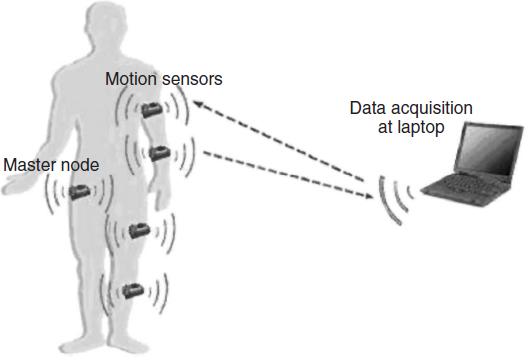1.2 SINGLE-HOP WIRELESS SENSOR NETWORKS
The majority of the existing applications for “wireless” sensors rely on a single-hop wireless network to reach a BS for further processing of the measured phenomena. That is, sensor measurements are sent directly, using a wireless medium, from sensor to BS. Most of these applications rely on sensors that are embedded into a different device. Also, the majority of applications for embedded sensors rely on single-hop wireless communication. For example, small sensors can be embedded into a traffic surveillance system to monitor traffic on congested roads or be used to monitor hot spots in a region or building.
Health care is one of the primary applications for wireless networks composed of embedded sensors. Sensors can be embedded into watches which, when attached to patients, monitor and analyze data such as pulse and blood pressure. In case of potential health risks, individual sensors send alarm messages to a nearby control center via one-hop wireless communication. As these sensors are battery powered, they can benefit from intelligent sensor management that provides energy efficiency as well as quality of service (QoS) control.

Figure 1.1 Monitoring limb movement in stroke patient rehabilitation.
For example, a wireless motion analysis sensor for stroke patient rehabilitation was studied in John et al. (2005). Wearable sensor motes with ...
Get Wireless Sensor and Actuator Networks: Algorithms and Protocols for Scalable Coordination and Data Communication now with the O’Reilly learning platform.
O’Reilly members experience books, live events, courses curated by job role, and more from O’Reilly and nearly 200 top publishers.

